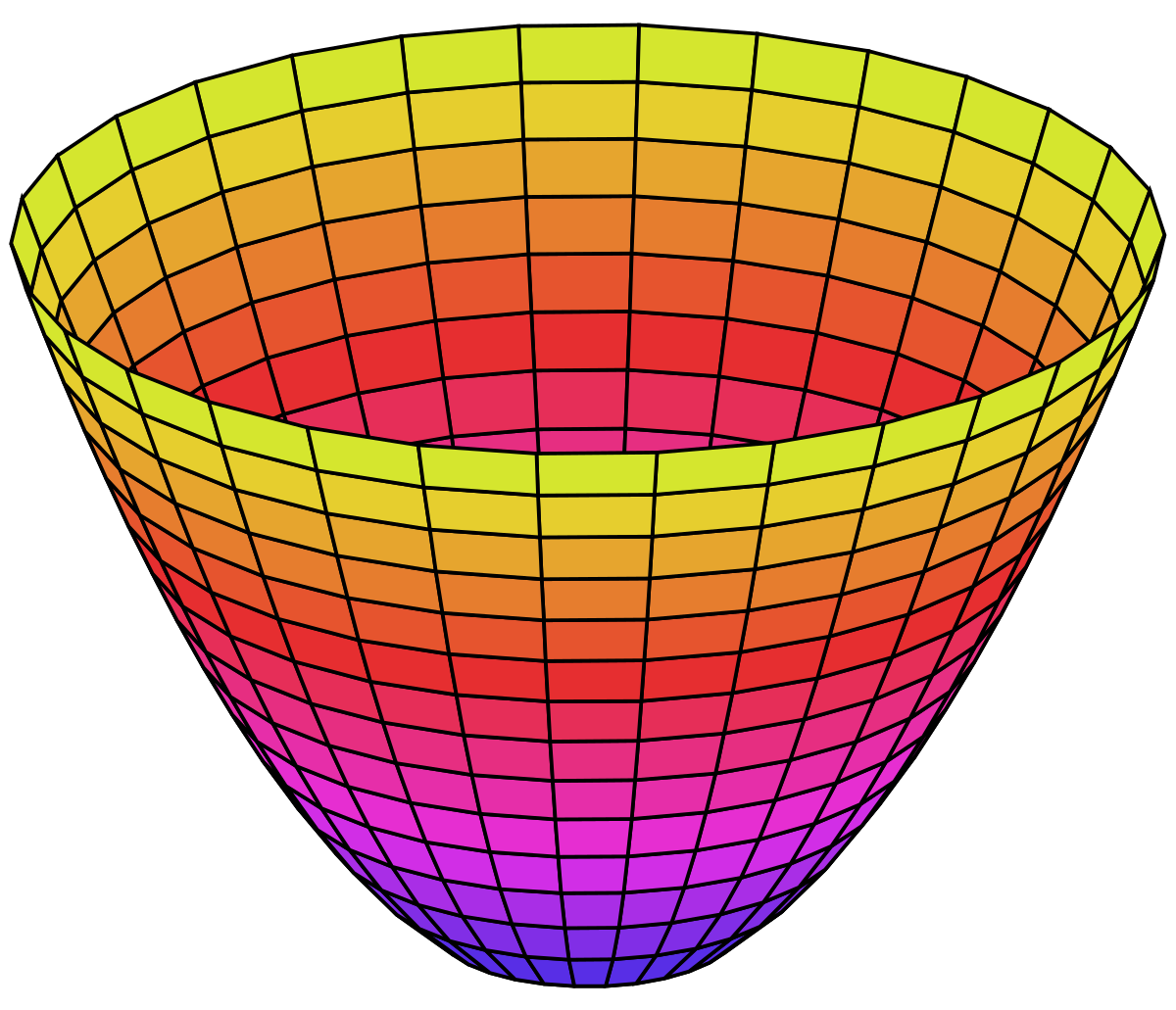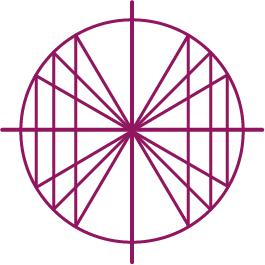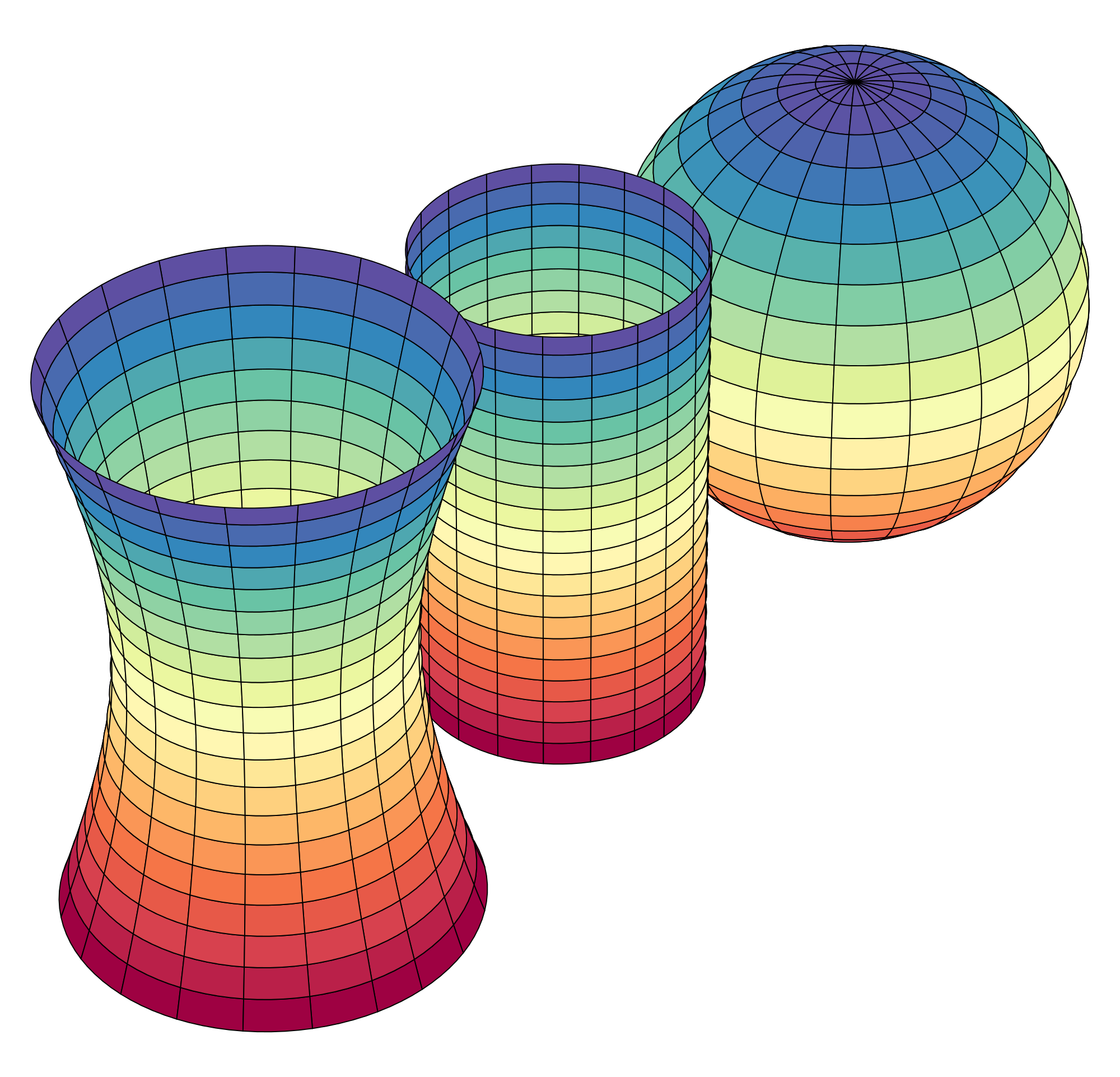Online Calculus Course for Credit
Distance Calculus @ Roger Williams University offers calculus-level courses for real academic credits - not 'certificate' or other types of course achievement measurements that are commonly found today with MOOCs (Massive Open Online Courses) like Coursera, Udemy, edX, and others. Freshman Math Courses
Freshman Math Courses
- Applied Calculus for Business [3 credits] [3CR]
- Applied Calculus for Life Science [3 credits] [3CR]
- Calculus I[4 credits] [4CR]
- Calculus II[4 credits] [4CR]
 Sophomore Math Courses
Sophomore Math Courses
- Multivariable Calculus III [4 credits] [4CR]
- Differential Equations [3 credits] [3CR]
- Linear Algebra [4 credits] [4CR]
- Probability Theory [3 credits] [3CR]
 Honors Math Courses
Honors Math Courses
- Honors Calculus I [5 credits] [5CR]
- Honors Calculus II [5 credits] [5CR]
- Honors Calculus I+II for Data Science [5 credits] [5CR]
- Honors Multivariable Calculus [5 credits] [5CR]
- Honors Differential Equations [4 credits] [4CR]
- Honors Linear Algebra [5 credits] [5CR]
- Honors Linear Algebra for Data Science [5 credits] [5CR]
 Lower Division Math Courses
Lower Division Math Courses
- Precalculus with Trigonometry [4 credits] [4CR]
- Introductory Statistics [4 credits] [4CR]
- Finite Mathematics [3 credits] [3CR]
- Discrete Mathematics [4 credits] [4CR]
 Upper Division Math Courses
Upper Division Math Courses
- Computational Abstract Algebra [4 credits] [4CR]
- Computational Differential Geometry [4 credits] [4CR]
Whatever your academic goal, likely you are looking to earn real academic college credits that you can show on an Official Academic Transcript from a regionally accredited university, the highest level of accreditation in the U.S.
MOOC courses are great. Khan Academy, Udemy, edX, Coursera - all of these are excellent resources, but they do not offer real academic credits nor real academic transcripts for course completion. You may learn a lot in these courses, but the end result is not an official academic transcript.
Here is a video about earning real academic credits from Distance Calculus @ Roger Williams University:
The Distance Calculus program is part of Roger Williams University - University College - a fully regionally-accredited university in Providence, Rhode Island, USA. Credit for Courses completed through Distance Calculus are real college credits from Roger Williams University.
The online classes offered from Distance Calculus @ Roger Williams University are asynchronous - self-paced - there are no fixed meeting times, no zoom meeting to attend, and you have 1 year to complete your course from the date of your enrollment. You may want to complete one of these online classes quickly - in a matter of weeks if you have a challenging deadline to meet - or take your time as your work/life schedule allows, and complete one of these online courses at a more relaxed pace, stopping and starting as you need to. This type of self-paced program is excellent for working adults.
Academic credit for courses from Distance Calculus @ Roger Williams University may be transferred to both undergraduate and graduate programs - see our Transfering Credits page for more information on transferring these online classes to other institutions - either part of a university degree program for a bachelor's degree you may be enrolled in now, or planning to be enrolled in; also many students enrolled in Distance Calculus are earning academic credit for courses to be part of their graduate school applications to a graduate school university degree program. When you are applying to a graduate program, you are not doing a credit transfer per se, but rather including proof of completion of these Calculus courses to be part of your graduate school application. For baccalaureate students already enrolled in a a college or university, you will be doing an academic credit transfer - it is best to follow the advice on the Transfering Credits page. If you are high school or otherwise not yet enrolled in an undergraduate program, but planning to start in such a program, the academic credit transfer is easier to accomplish, with presentation of official official academic transcripts when you start your new undergraduate program. Many advanced high school students complete upper Distance Calculus courses with this credit transfer plan in mind.
The exam schedule for these online classes from Distance Calculus are scheduled with the instructor at your convenience, once you have completed all of the course work. Many students in Distance Calculus will have their final exam sheduled on a Saturday, or Sunday, or in the evening. During COVID-19, all proctored final exams are completed over Skype video with the instructor.
Below are the list of course topics for the core Calculus courses for Distance Calculus that outline the principles of calculus that are explored in the Calculus I and Calculus II courses. Please see the links above for the other courses offered by Distance Calculus @ Roger Williams University.
Course Description for Calculus I (Calculus 1)
- Precalculus Review
- Solving Simple Equations
- Solving (easy) equations in 1 variable
- What if you can't solve for x?
- Finding solutions numerically
- Finding solutions graphically
- Solving equations of more than 1 variable
- Functions
- Functional notation
- Data sets
- Graphing functions
- Data sets and smooth curves
- Domain and Range
- Algebraic combinations of functions
- Linear Functions
- Algebraic definition
- Slope
- Graphing linear functions by hand
- Properties of linear functions
- Linear data sets
- Quadratic Functions
- Algebraic definition
- Graphing and Properties of Quadratic Functions
- Solving quadratic equations algebraically:Factoring
- Solving quadratic equations algebraically:Quadratic formula
- Solving quadratic equations numerically and graphically
- Power and Polynomial Functions
- Algebraic definition
- Graphing and Properties of Polynomial Functions
- Solving polynomial equations algebraically: factoring
- Solving polynomial equations numerically and graphically
- Radicals and fractional exponents
- Rational Polynomial Functions
- Rational Polynomial Functions
- Algebraic definition
- Graphing and Properties of Rational Polynomial Functions
- Solving rational polynomial equations algebraically: factoring
- Exponential Functions
- Algebraic definition
- Graphing and Properties of Exponential Functions
- Solving exponential equations numerically and graphically
- Exponential Growth and Applications
- Data sets and exponential functions
- Logarithmic Functions
- Inverse Functions
- Algebraic Definition
- Graphing and Properties of Logarithmic Functions
- Solving exponential and logarithmic equations algebraically
- Solving logarithmic equations numerically and graphically
- Logarithmic Growth and Applications
- Data sets and logarithmic functions
- Trigonometric Functions
- Trigonometric Data
- Periodicity
- Amplitude, Phase Shift, Graphing Trigonometric Functions
- Trigonometric Functions
- Trigonometric Identities
- Solving Simple Equations
- Growth: Preparing for the Derivative
- Growth of Linear Functions: Rate of Change
- Growth of Power Functions: Rate of Change
- Growth of Exponential Functions: Rate of Change
- Dominance of Growth of Functions
- Percentage Growth of Functions: Percentage Rate of Change
- Global Scale: Infinite Limits
- Data Functions and Interpolation
- Approximation of Functions by Linear Functions
- Continuity
- Limits
- Continuous Functions
- Jump Discontinuities
- Piecewise Functions and Continuity
- Limit Rules
- Exponential Functions and Natural Logarithms
- e = Euler's Number
- Natural Logarithm
- Growth Analysis
- Applications: Carbon Dating
- Percentage Growth and Steady Growth of Exponential Functions
- Data Functions and Logarithmic Analysis
- Inverse Functions
- Applications: Compound Interest and Finance
- Applications: World Population
- The Derivative of Polynomial, Exponential, Logarithmic, and Fractional Powers
- Instantaneous Growth Rates
- Definition of the Derivative
- Computing the Derivative Graphically
- Computing the Derivative Algebraically
- Computing the Derivative Numerically
- Average Growth Rate vs. Instantaneous Growth Rate
- Applications of the Derivative: Spread of Disease
- Finding Maxima and Minima of Functions
- Relating a Function and Its Derivative
- The Derivative of Polynomial, Exponential, Logarithmic, and Fractional Powers
- Computing Derivatives
- Sum, Difference, Product, Quotient Rule
- Chain Rule
- Logarithmic Differentiation
- Instantaneous Percentage Growth
- Growth Dominance
- Applications: Linear Dimensions
- Implicit Differentiation
- Using Derivatives
- Finding Maxima and Minima
- Finding Good Representative Plots
- Applications: Maximizing Volume
- The Second Derivative
- Applications: The Space Shuttle Challenger
- Mean Value Theorem
- Integration
- Measuring Area Under a Curve
- Definition of the Integral
- Properties of Integrals, Symmetry
- Integrals of Data Functions
- Numerical Methods: Rectangles, Trapezoids
- Undefined Integrals
- Numerical Calculation of Integrals
- Fundamental Theorem of Calculus
- Derivative of an Integral
- Integral of a Derivative
- Fundamental Theorem of Calculus Formula
- Distance, Velocity, and Acceleration
- Improper Integrals
- More Properties of Integrals
- Applications: Measure Accumulation Totals
- Indefinite Integrals and Antiderivatives
- u-Substitution
Calculus II (Calculus 2) Course Description
- Integration
- Measuring Area Under a Curve
- Definition of the Integral
- Properties of Integrals, Symmetry
- Integrals of Data Functions
- Numerical Methods: Rectangles, Trapezoids
- Undefined Integrals
- Numerical Methods: Rectangles, Trapezoids
- Numerical Calculation of Integrals
- Fundamental Theorem of Calculus
- Derivative of an Integral
- Integral of a Derivative
- Fundamental Formula
- Distance, Velocity, and Acceleration
- Improper Integrals
- More Properties of Integrals
- Applications: Measure Accumulation Totals
- Indefinite Integrals and Antiderivatives
- Measurements via Slicing
- Measuring Area via Slicing
- Measuring Volume via Slicing
- Density and Mass
- Accumulation of Rates
- Arc Length
- Computing Integrals
- Algebraic Antiderivatives
- Integrals of Standard Functions: Polynomial, Exponential, Trigonometric, Logarithmic
- Transforming Integrals: u-substitution
- Measuring Area under Parametric Curves
- Integrals of Polar Functions
- Measurements via Slicing
- Measuring Area via Slicing
- Measuring Volume via Slicing
- Density and Mass
- Accumulation and Rates
- Arc Length
- Double Integrals
- Measuring Area and Volume
- Gauss-Green Formula
- Changing Order of Iterated Integrals
- Integration Techniques
- Separable Differential Equations
- Integration By Parts
- DeMoivre's Theorem
- Integration Patterns and Reduction Formulas
- Partial Fractions Technique
- Trigonometric Integrals
- Trigonometric Substitution
- Integration via Differentiation Technique
- Taylor's Expansion of a Function
- Splines and Smooth Splines
- Points of Contact
- Application: Landing an Airplane
- Taylor Expansion
- Recognizing Familiar Expansions
- Using Expansions for Approximations
- Derivatives and Integrals of Expansions
- Expansions At Other Points
- Newton's Method
- Calculating Limits: L'Hopital's Rule
- Expansions and Solving Differential Equations
- Complex Exponentials
- Euler, Midpoint, Runge-Kutta Integral Estimates
- Sequences and Series
- Sequences of Numbers
- Series of Numbers
- Convergence
- Convergence of Taylor Expansions
- Barriers: Radius of Convergence
- Shared Convergence Intervals for Derivatives and Integrals of Functions
- Applications: Drug Dosing
- Power Series
- Basic Definition
- Solutions of Differential Equations
- Convergence Intervals of Power Series
- Ratio Test
- Finding Series Convergence Values via Power and Taylor Series
- Polar Coordinates
- Basic Graphing
- Recognizable Curves
- Differentiation and Integration in Polar Coordinates
- Vector Analysis
- Vector Arithmetic
- Dot Product, Cross Product
- Planes
Distance Calculus - Student Reviews





Date Posted: Jan 13, 2020
Review by: Janice Flores
Student Email: jflores35@knights.ucf.edu
Courses Completed: Calculus II
Review: I highly recommend this course! Dr. Curtis is the best teacher and is ALWAYS willing to work with you to make sure you understand the subject. It was definitely a positive experience and the credits were transferred to my University with no problems! I definitely do not regret it and I had doubts in the beginning but if I had to, I would do it all over again!
Transferred Credits to: University of Central Florida





Date Posted: Feb 23, 2020
Review by: Carl Conners
Courses Completed: Multivariable Calculus, Differential Equations, Linear Algebra
Review: After a really rough first year of calculus, I completed all of the second year calculus courses with Distance Calculus. It was like night and day the difference. My first year was so boring and monotonous. Multivariable Calculus, Differential Equations, and Linear Algebra through Distance Calculus were just so much different - so not boring at all. I thoroughly enjoyed these courses. So engaging.
Transferred Credits to: Michigan State University




Date Posted: Mar 16, 2020
Review by: Malia K.
Courses Completed: Applied Calculus
Review: Course was good and fast. I don't like math so I can't say it was fun or anything. Grader was very nice. Software was ok.
Transferred Credits to: University of Maine

